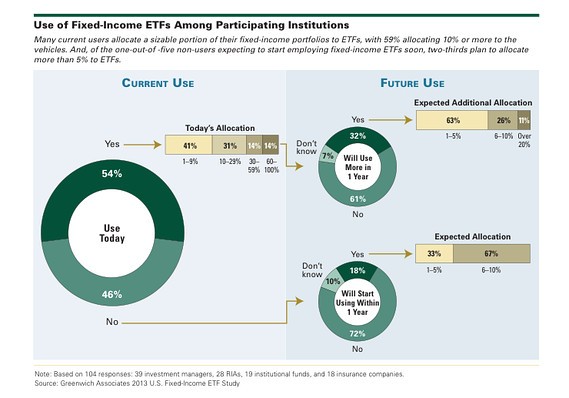Etfs Income Investing
Post on: 8 Апрель, 2015 No Comment

High-Yield ETFs Near 2-Year Lows As Oil Decline Continues
By Michael Aneiro
The combination of another risk-off day in financial markets and the ongoing collapse of oil prices has dragged the two biggest high-yield bond exchange traded funds close to two-year lows. The SPDR Barlcays High Yield Bond ETF (JNK ) is down 17 cents today to $38.72, approaching the $38.70 two-year low it reached in June 2013, during that summers spike in interest rates. After climbing as high as $41.80 in June of this year, JNK is now down 7.4% since then.
Similarly, the iShares iBoxx $ High Yield Corporate Bond ETF (HYG ) was recently down 31 cents at $89.54, after trading as low as $89.24 earlier this morning, which is as close as its come all year to its two-year low closing level of $89.04 seen in late June 2013. HYG had closed at $96.29 just six weeks before that. The highest its risen this year was $95.38 back in late June; since then, HYG is down 6%.
Ive written repeatedly over the past couple of months that the energy sector now constitutes about 17% of the broader high-yield market, and the drop in oil prices continues to weigh on high-yield bonds. In June, the high-yield markets average yield hit an all-time low 4.86%, per a benchmark Bank of America index, and at that time the energy sector yielded a nearly identical 4.88%. Today, the markets average yield has risen to 6.48%, as the energy sectors average yield has soared to 8.90%, a spread of 7.1 percentage points over comparable Treasury bonds. The average high-yield bond now trades at 99.58 cents on the dollar, dropping below par value for the first time all year on Friday, while the average bond in the energy sector now trades below 90 cents on the dollar at 89.83 cents.
Plunging oil prices have driven nearly one out of four high-yield Energy issues into distressed territory, writes Martin Fridson, chief investment officer at Lehmann Livian Fridson Advisors today. The implied default rate for the next 12 months fits the trajectory we would likely see leading up to an industry-specific oil patch recession in 2016.
Fitch Ratings says it expects the default rate among companies with speculative-grade ratings to remain in a benign range of 1.55 to 2% heading into 2015, but Fitch says energy continues to be a closely watched sector as crude oil prices have fallen to five-year lows. Fitch says the amount of energy-company debt has risen by 155% since the end of 2009.
Nov 14, 2014
10:44 AM ET
Big Week For First Trust ETF Amid Broad Bond-Fund Inflows
By Michael Aneiro
It was a pretty good week for bond funds in terms of of attracting investor money. Lipper reported that taxable bond mutual funds added a net $3.8 billion to their accounts in the week ended yesterday. High yield mutual funds took in a net $796 million, a fourth straight week of net inflows, while muni-bond investors added a net $513 million to their accounts, despite some recent weak performance. Lipper said money market funds saw net inflows of $4.6 billion, which really consisted of $9.3 billion of inflows from institutional investors minus $4.7 billion pulled out by retail investors. Bank loan funds continue to struggle, reporting outflows of $366 million, marking an 18th straight week of net outflows. Earlier this year those funds saw a 95-week streak of inflows come to an end.
The week’s top destination for bond ETFs was First Trust Enhanced Short Maturity ETF (FTSM), with net inflows of $1.0 billion (huge activity for this formerly ignored product). writes Lippers Jeff Tjornehoj. Lipper doesnt offer any explanation for why that particular fund saw such a big spike in inflows, but short-term bond funds have been popular as a way to dodge longer-term interest-rate risk at a time when the Federal Reserve is expected to raise short-term interest rates sometime next year. But if youre investing in short-term funds, bear in mind that short-term interest rates are probably the most susceptible to any change in the Feds policy rate.














